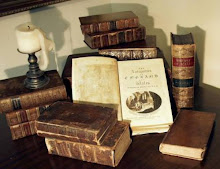To Mrs. A.W. Fairbanks,
Fairbanks,
Cleveland, Ohio
With the love of her good & dutiful
adopted son
The Author
Hartford Dec. 20, 1881
So reads the inscription of a pre-publication copy of The Prince and the Pauper, A Tale for Young People of All Ages. The story behind Mark Twain's Christmas present to Mary Mason Fairbanks can be found, along with other details about the book, in Bauman Rare Books, Catalogue "Ernest" of 1997.
A book catalogue is a wonderful thing. The best are no simple listings of books and prices, but a combination of bibliography, history, review, and advertisement. One can find books of all categories, of all price ranges (the price of the Twain presentation copy is "available upon request"), of all forms, old and new, original and restored. In Ye Gode Olde Dayse (pre-Internet), catalogues were the sole means by which dealers and buyers did business through the mail. Today many feature full color photographs on glossy paper that make them the literary equivalents of the Victoria's Secret catalogue.
A fine example of an early catalogue (c.1954) is The Book Shelf, Book List #2, a type-written, hand-titled pamphlet of 919 items briefly described. Second Life Books produces regular, utilitarian catalogues, which Catalogue 141 offers a copy of the 1880 American Publishing edition of A Tramp Abroad for $450. The 19th Century Shop, Catalogue 104 includes an inscribed copy of the same book--price $12,500. On the front free endpaper the author has written, "Truly yours, Mark Twain". Was this written at the nineteenth century equivalent of an author's book-signing tour for an anonymous fan? Certainly a more personal relationship is indicated by the inscription above; price (upon request) will be commensurate.
Even more impressive is the Shop's Catalogue 100 featuring 50 Giants of Western Civilization. Though this is an offering of items of intellectual and cultural merit as well as financial and economic worth, it is a fine production in itself, worthy of the coffee table of any bourgeoisie. The Imperial Fine Books, Catalogue XVIII, though concise in descriptions, is lavish in photographs, resembling a brochure one might pick up at a Lexus dealer. The Vieux Livres d'Europe, Rare Book Catalogue 8 is thorough, with a full-page photograph of nearly every item, resembling an art book one would purchase at the Met.
Some of our personal favorites are catalogues of public auctions, such as the 1944 Parke-Bernet Galleries sale of the library of Howard J. Sachs, featuring over forty items by and associated with Thomas Hardy. This catalogue includes numerous reproductions of manuscript by many authors, and best of all, prices were to be named. Another favorite is William H. Schab, Catalogue No. 16, which has a nice compliment of illustration, an elegant design and format, and perfect use of typeface to achieve a book-like readability.
In some ways perusing book catalogues is like pouring over the box score of yesterday's baseball game, mostly a practice of the hardcore collector. We believe it is another necessary act of devotion. Our friend Callisto enjoys browsing the listings of cottages and manors for sale in England, and dreaming of what may be. In the same way, eager anticipation of the Book Catalogue Fairy proves everyday readers enjoy these listings sent to their homes, sometimes providing them with a quick and painless way to acquire a book they didn't know they needed to add to their collection of "Must-Reads," but always representing the dream of endless possibilities available to the book fancier.


Would you believe, the BCF just dropped off my new "Common Reader" catalog on the selfsame day the rent falls due.
ReplyDeleteI think she's one of those seductive but evil faries.
Aren't they all.
ReplyDelete